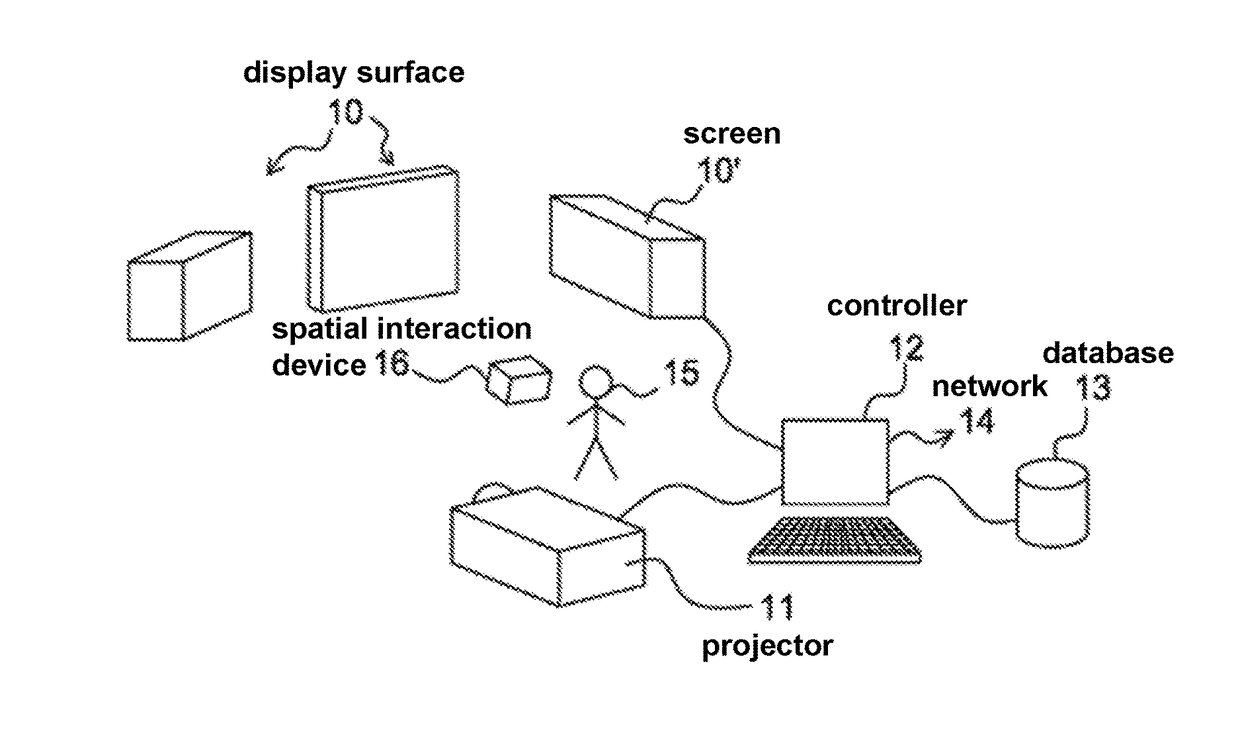Device and method for orchestrating display surfaces, projection devices, and 2d and 3D spatial interaction devices for creating interactive environments
a technology of projection device and display surface, applied in the direction of color television, image data processing, instruments, etc., can solve the problems of low user experience, low cost of environment, and high implementation cost, and achieve the effect of reducing the cost of prototyping and evaluation of new functionalities in these environments, and reducing the cost of implementation
- Summary
- Abstract
- Description
- Claims
- Application Information
AI Technical Summary
Benefits of technology
Problems solved by technology
Method used
Image
Examples
Embodiment Construction
[0053]In the present mode of implementation, given here by way of nonlimiting illustration, a device according to the invention is used within the framework of the generation of a cockpit simulator. It will be referred to subsequently by the term simulation management device.
[0054]As seen in FIG. 1, the simulation management device uses for its implementation a plurality of display surfaces 10 not necessarily plane, nor necessarily parallel, connected or coplanar. The invention can naturally be implemented on a single surface, but finds its full use only for the generation of images toward several surfaces.
[0055]The display surfaces 10 considered here are in particular of passive type. That is to say that they may typically be surfaces of cardboard boxes, of boards, etc. In one embodiment given by way of simple illustrative example, the display surfaces 10 consist of a set of cardboard boxes of various sizes, disposed substantially facing a user 15 of said simulation management devi...
PUM
 Login to View More
Login to View More Abstract
Description
Claims
Application Information
 Login to View More
Login to View More - R&D
- Intellectual Property
- Life Sciences
- Materials
- Tech Scout
- Unparalleled Data Quality
- Higher Quality Content
- 60% Fewer Hallucinations
Browse by: Latest US Patents, China's latest patents, Technical Efficacy Thesaurus, Application Domain, Technology Topic, Popular Technical Reports.
© 2025 PatSnap. All rights reserved.Legal|Privacy policy|Modern Slavery Act Transparency Statement|Sitemap|About US| Contact US: help@patsnap.com


